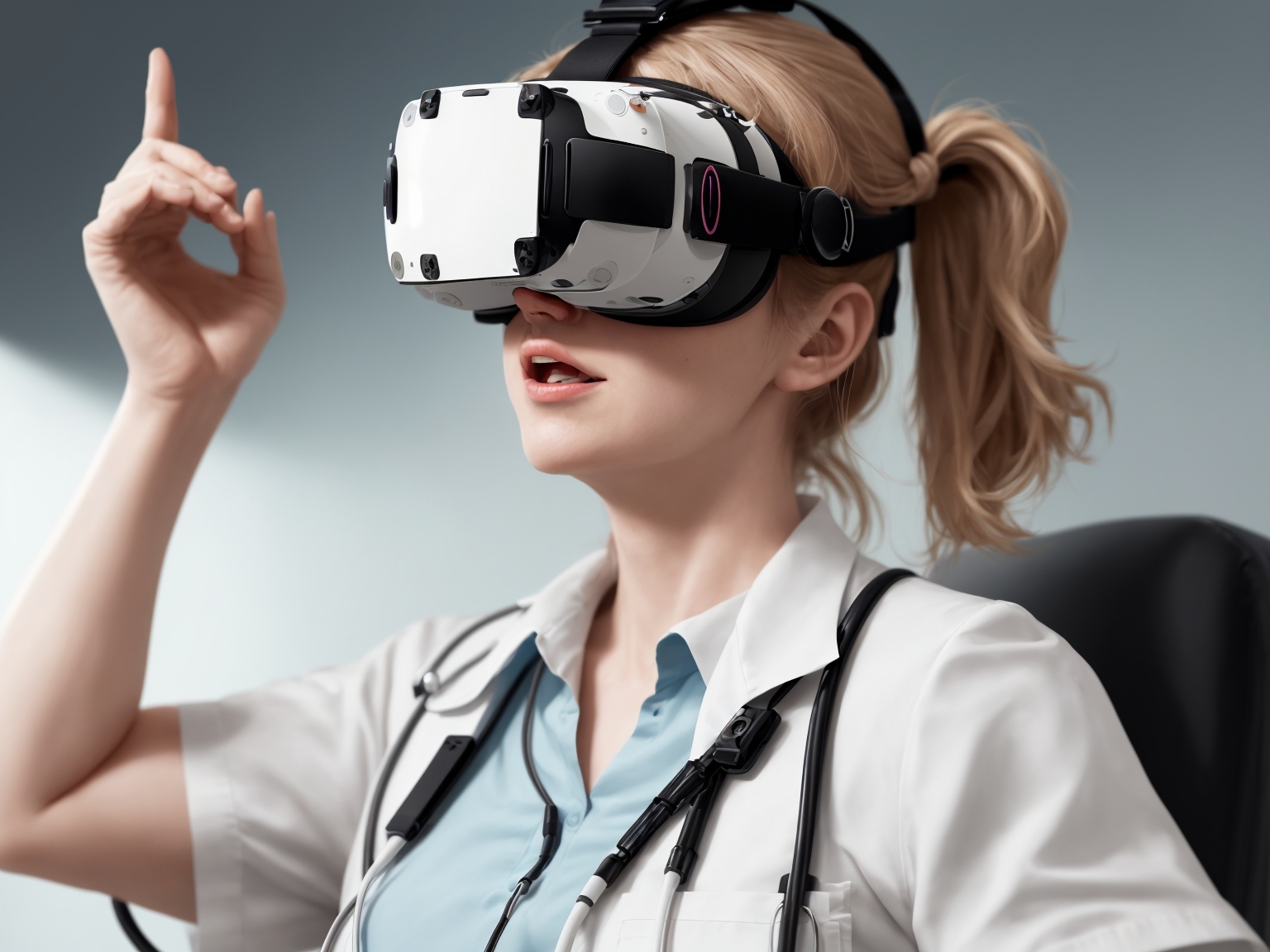**Title: VR Technology Transforming Healthcare: A Comprehensive Guide**
**Introduction**
Welcome to our deep dive into the fascinating world of Virtual Reality (VR) technology in healthcare! As we step into a new era of digital health, VR is rapidly emerging as a transformative tool, offering unprecedented opportunities for revolutionizing patient care. In this blog post, we’ll explore the various applications, benefits, and future prospects of VR technology in healthcare, providing you with a comprehensive understanding of its potential impact.
**What is Virtual Reality (VR) Technology?**
– VR is a simulated experience that can replicate and transport users to different environments.
– It uses computer-generated sensory feedback such as visual, auditory, and tactile stimuli to create an immersive experience.
**How VR is Transforming Healthcare**
1. **Medical Training**: VR simulations enable medical students and professionals to practice surgeries, diagnoses, and treatment plans in a risk-free environment. This improves competency, reduces errors, and enhances patient safety.
2. **Pain Management**: Virtual reality distraction therapy helps alleviate pain by immersing patients in calming, engaging environments. This can reduce the reliance on opioids and improve quality of life for patients.
3. **Mental Health Therapy**: VR platforms offer immersive, interactive treatments for conditions such as PTSD, anxiety, and phobias. Exposure therapy becomes more effective when administered in a controlled, virtual setting.
4. **Telemedicine**: VR technology enables remote consultations, allowing specialists to assess patients virtually and provide treatment plans from anywhere in the world. This improves accessibility and efficiency of healthcare services.
5. **Rehabilitation**: VR-based exercises can help patients with motor impairments, stroke victims, and those recovering from injuries regain mobility and coordination more effectively than traditional methods.
**FAQs**
1. **Is VR technology safe for healthcare applications?** Yes, VR technology is generally safe when used under the supervision of trained professionals. However, it should not be used by individuals who have epilepsy or are sensitive to flashing lights without medical advice.
2. **How effective is VR in pain management?** While the effectiveness can vary among individuals, studies suggest that VR distraction therapy significantly reduces pain perception and improves quality of life for patients.
3. **Can VR replace traditional methods in healthcare completely?** While VR offers numerous benefits, it’s unlikely to completely replace traditional methods. However, it will undoubtedly become an integral part of modern healthcare practices.
4. **What is the future of VR technology in healthcare?** The future holds exciting possibilities for VR in healthcare, with developments in AI, haptic feedback, and wireless connectivity expected to further enhance its capabilities.
**Conclusion**
Virtual Reality technology represents a promising and transformative force in modern healthcare. By improving training, pain management, mental health therapy, telemedicine, and rehabilitation, VR has the potential to revolutionize patient care and outcomes while increasing efficiency and accessibility of healthcare services. As we continue to innovate and refine this technology, the benefits for patients worldwide will only grow more significant. Stay tuned as we delve deeper into the fascinating world of VR in healthcare!
**Disclaimer:** This blog post aims to inform and educate readers about the potential applications of Virtual Reality technology in healthcare. It is not intended to replace professional medical advice or training. Always consult with a qualified healthcare provider for specific health concerns.

Leave a Reply